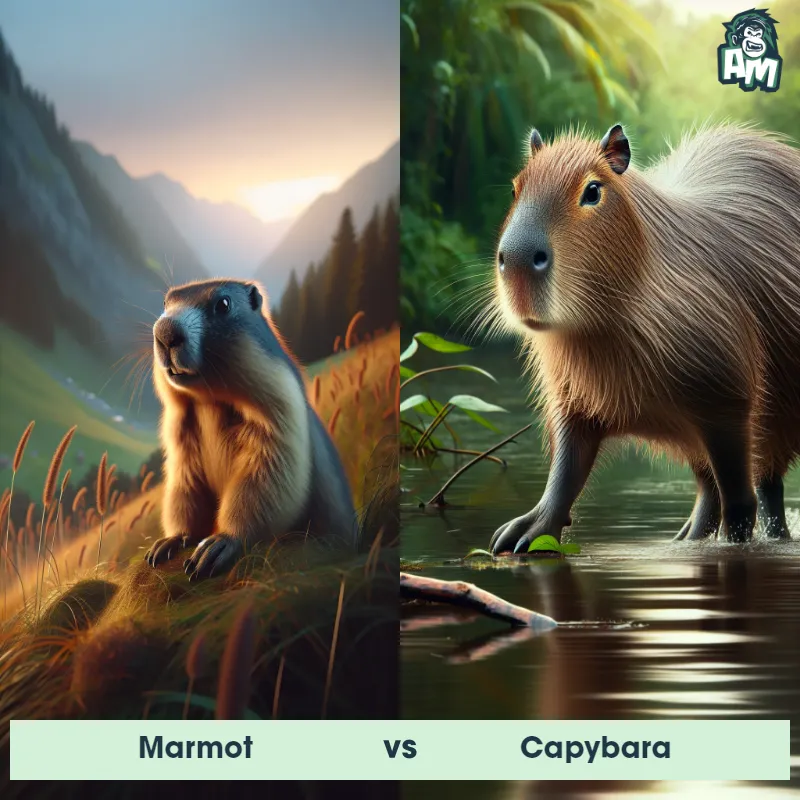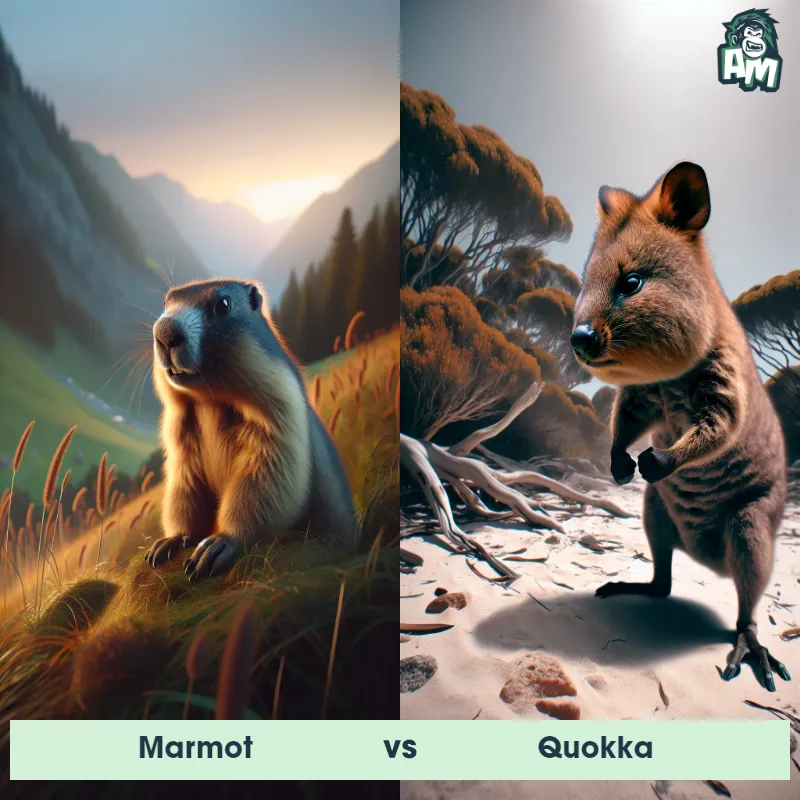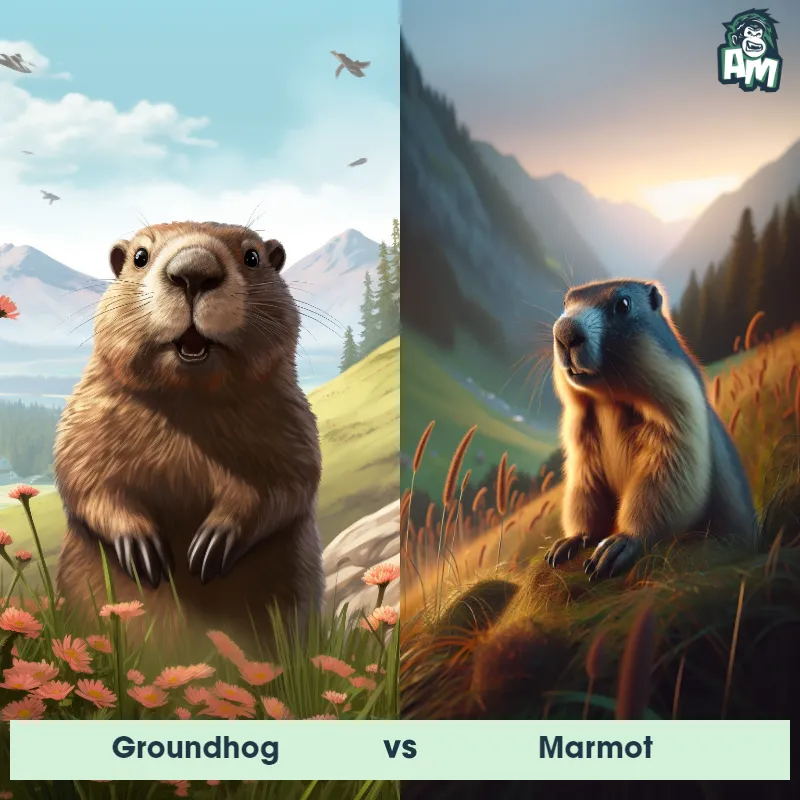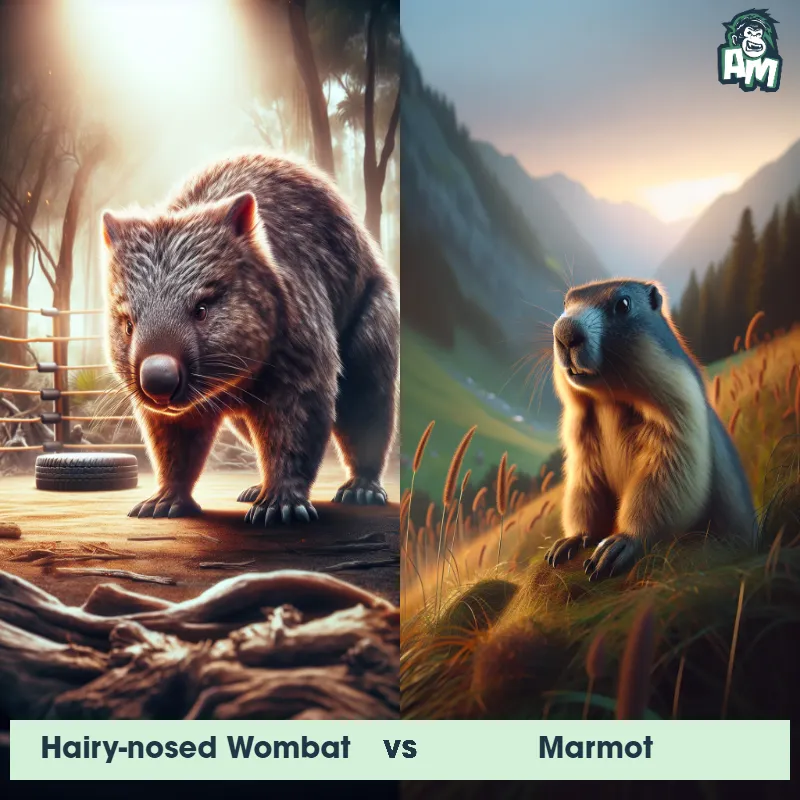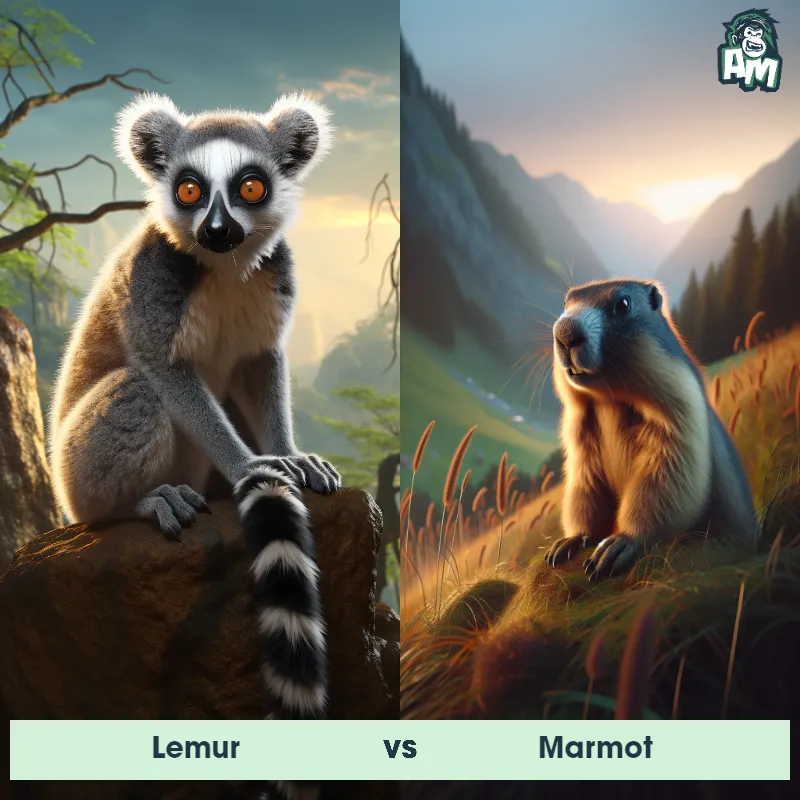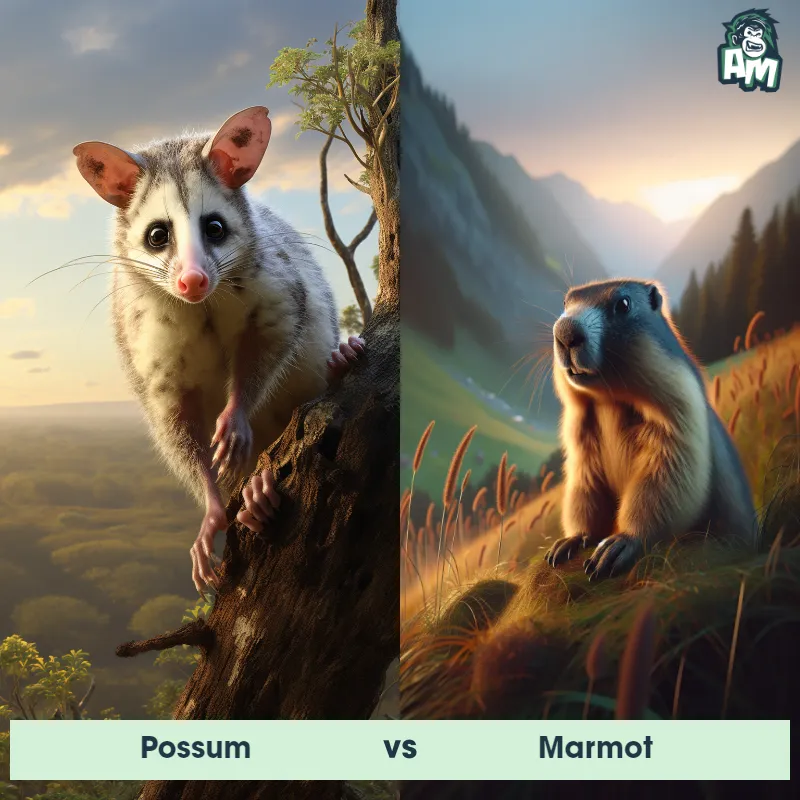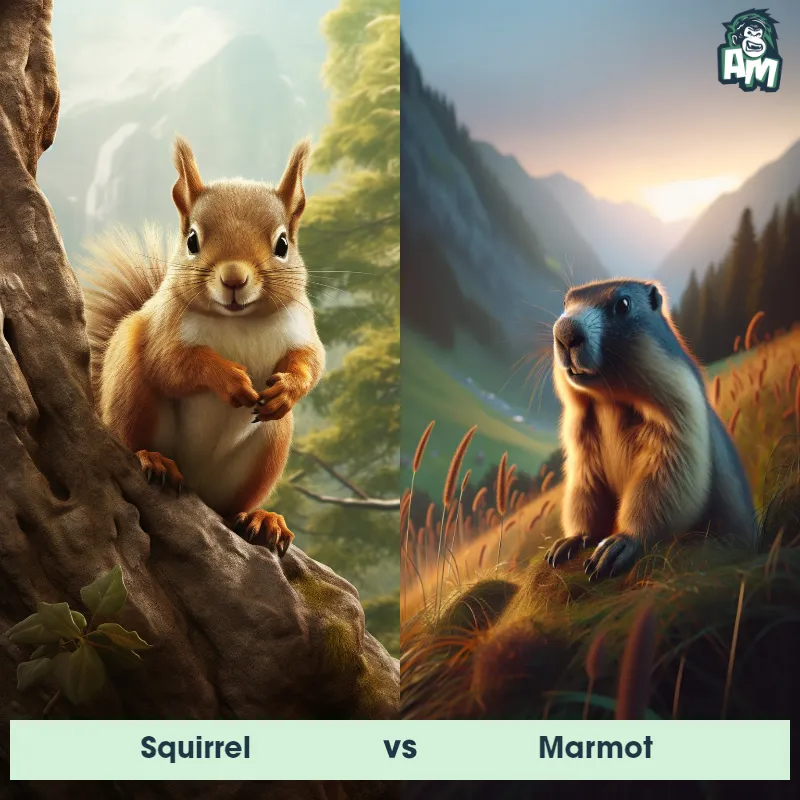The Marmot
The Marmot, also known as the groundhog or woodchuck, is a small to medium-sized rodent that belongs to the squirrel family. Marmots are typically stocky animals with short legs, a compact body, and a bushy tail. They have strong claws for digging burrows and are known for their excellent digging skills. Most Marmots have a brownish or reddish-brown fur color with lighter underparts. They have small ears and dark prominent eyes. Marmots are primarily herbivores, feeding on a diet of grasses, herbs, fruits, and sometimes insects. They are social animals that live in colonies and communicate with each other through a variety of vocalizations.

| Marmot | |
|---|---|
| Size | Up to 2 feet long (60 centimeters) |
| Weight | Up to 13 pounds (6 kilograms) |
| Speed | 20mph (32km/h) |
| Key Strength | Agility and ability to retreat into burrow |
| Biggest Weakness | Relatively small size and lack of offensive weapons |
| Scientific Name | Marmota |
| Family | Sciuridae |
| Habitat | Mountains and meadows |
| Geography | North America, Europe, Asia |
| Diet | Herbivorous, primarily grasses, leaves, and flowers |
| Lifespan | 6 years - 10 years |

The Marmot
The Marmot, also known as the groundhog or woodchuck, is a small to medium-sized rodent that belongs to the squirrel family. Marmots are typically stocky animals with short legs, a compact body, and a bushy tail. They have strong claws for digging burrows and are known for their excellent digging skills. Most Marmots have a brownish or reddish-brown fur color with lighter underparts. They have small ears and dark prominent eyes. Marmots are primarily herbivores, feeding on a diet of grasses, herbs, fruits, and sometimes insects. They are social animals that live in colonies and communicate with each other through a variety of vocalizations.
Fun Fact: One fascinating fact about Marmots is that they are true hibernators, entering a deep sleep-like state called torpor during the winter months to conserve energy when food is scarce. Their heart rate drops dramatically, and their body temperature decreases significantly, allowing them to survive without eating for several months.
| Marmot | |
|---|---|
| Size | Up to 2 feet long (60 centimeters) |
| Weight | Up to 13 pounds (6 kilograms) |
| Speed | 20mph (32km/h) |
| Key Strength | Agility and ability to retreat into burrow |
| Biggest Weakness | Relatively small size and lack of offensive weapons |
| Scientific Name | Marmota |
| Family | Sciuridae |
| Habitat | Mountains and meadows |
| Geography | North America, Europe, Asia |
| Diet | Herbivorous, primarily grasses, leaves, and flowers |
| Lifespan | 6 years - 10 years |
Marmot Matchups
We use AI to simulate matchups between the Marmot and other animals. Our simulation considers size, strength, and natural predatory behaviors to determine the most likely outcome.
Marmot: Diet, Predators, Aggression, and Defensive Behaviors
What do Marmots eat?
Marmots are herbivores, primarily feeding on grasses, roots, flowers, and berries. Marmot may also consume insects and small animals occasionally, but their diet mainly consists of plant matter. Marmot spend a lot of time foraging for food to sustain their energy levels during their active months.
Do Marmots have any predators?
Yes, Marmots have several predators, including eagles, wolves, foxes, coyotes, and bobcats. These predators rely on the Marmots as a food source and will hunt them in their burrows or while Marmot are out foraging. Marmots have adapted by being cautious and alert to avoid being caught by predators.
Are Marmots aggressive?
Marmots are not typically aggressive animals. Marmot are known to be social creatures that live in colonies, and Marmot often communicate through a series of vocalizations. However, when threatened or approached by a predator, Marmots may exhibit defensive behaviors to protect themselves and their young.
Do Marmots fight?
Marmots are not known for engaging in physical fights with each other. Marmot may exhibit some aggressive behaviors, such as chasing off rivals or intruders from their territories. However, conflicts within a Marmot colony are usually resolved through vocalizations and posturing rather than physical confrontations.
How do Marmots defend themselves?
Marmots have several ways to defend themselves from predators. Marmot have keen senses of hearing and smell, allowing them to detect potential threats from a distance. When threatened, Marmots will emit loud warning calls to alert others in the colony and seek shelter in their burrows. Marmot may also use their sharp claws and teeth to defend themselves if approached closely.
What is the biggest weakness of Marmots in a fight?
Marmots are not built for physical combat and are not particularly agile or aggressive when it comes to defending themselves. Their best defense mechanism is to retreat to their burrows or communicate with other members of their colony for help. In a fight, their lack of speed and strength compared to their predators could be considered a significant weakness.
Fun Fact: Another interesting fact about Marmots is that they are excellent climbers despite their stout physique. They can climb trees and rocks with agility, using their sharp claws and strong limbs to navigate challenging terrain.
Fun Fact: Marmots are known for their vocal nature and have a range of distinctive calls to communicate with their colony members. One of their vocalizations, known as the "whistle," is a loud and high-pitched call that serves as an alarm when they spot potential predators. This whistle can be heard over long distances, alerting other Marmots in the area to take cover.



